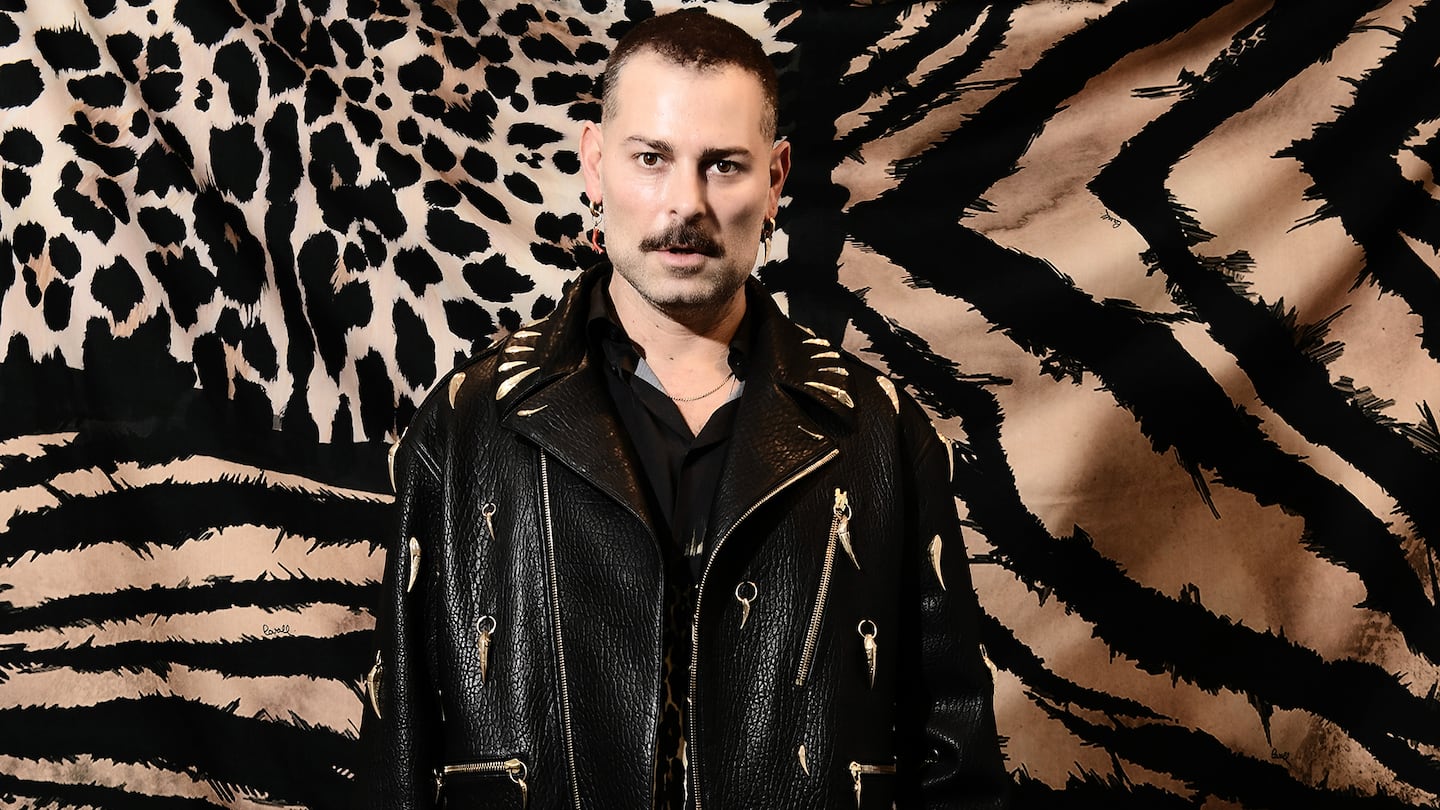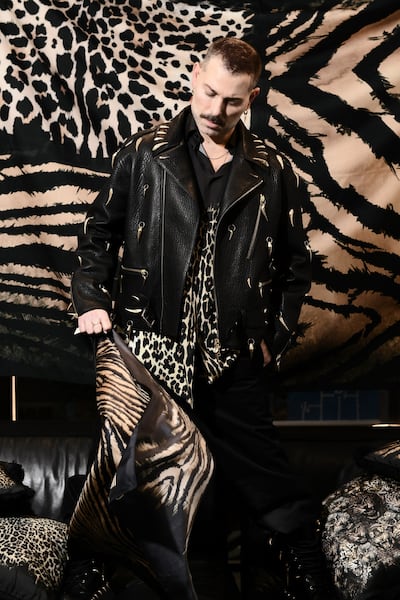
The Business of Fashion
Agenda-setting intelligence, analysis and advice for the global fashion community.

Agenda-setting intelligence, analysis and advice for the global fashion community.

About a week ago, Roberto Cavalli’s Instagram feed went blank. Its first new post: a tiger and leopard-print take on the American flag captioned “United States of Cavalli.”
The social media update teases the extravagant Italian brand’s reboot almost two years after it filed for creditor protection in 2019. Since then, it’s acquired a wealthy new backer, new management and new creative direction under designer-to-the stars Fausto Puglisi.
Over the last few months, there have been a suite of quiet changes. New general manager Ennio Fontana has begun streamlining the business and laid out a roadmap for getting the company back on track. Now Puglisi, best-known for dressing superstars like Madonna, Beyoncé and Jennifer Lopez, must convince a new generation of home-bound, athleisure addicts to buy into Roberto Cavalli’s flamboyant take on Italian glamour.
The company is hoping to repeat the success of other Italian brands that have managed to turnaround faded fortunes. Just look to Kering-owned Gucci’s spectacular reboot, or the revival of Versace, which was acquired by Capri Holdings in 2018 in a deal that valued the house at $2.1 billion. But Roberto Cavalli is undertaking the task in a very different environment. Both Gucci and Versace rode the wave of fashion’s recent Italian maximalist moment. That was beginning to die down going into the pandemic and the Covid-19 crisis has only accelerated the trend, halting growth at both Gucci and Versace.
ADVERTISEMENT
More broadly, the business outlook is grim and the future of the luxury sector is uncertain. The market is increasingly consolidated in the hands of giant luxury conglomerates, which dominate sales and marketing channels. Both Gucci and Versace sit within the stable of cash-rich fashion power-houses. Cavalli’s new owner — a private investment entity controlled by Dubai-based real-estate tycoon Hussain Sajwani — has deep pockets, but the acquisition of the Italian house is its first segue into the luxury fashion space.
“There is an opportunity because there’s already brand awareness,” said Mario Ortelli, managing partner at Ortelli & Co. “But then you have to play your cards [right]. You have to execute on everything.”
There is an opportunity because there’s already brand awareness. But then you have to...execute on everything.
Fontana has a track record of scaling brands. He joined Cavalli from Philipp Plein Group, where turnover of the company’s flagship brand grew from €4 million ($4.8 million) in 2008 to €180 million in 2015 under his leadership. Fontana then went on to triple revenues at sister-brand Billionaire, a luxury menswear line, to €30 million in 2018.
Fontana is betting big on Puglisi’s vision for a new Cavalli, aiming to modernise the brand DNA for a new generation of young, streetwear-savvy, culturally aware shoppers.
“Cavalli was connected to flamboyant sexiness. Of course, times have changed,” said Puglisi, pointing to cultural and social movements like #MeToo, Black Lives Matter, sexual fluidity and body positivity, which have reshaped what fashion consumers today define as aspirational. “Cavalli DNA is about beauty, about parties, about energy. I want to say: how can I translate this brand for nowadays?”

Behind the scenes, Fontana has worked to bolster the brand’s creative control over products bearing the Cavalli name. Previously, the label relied on licensing deals for an array of products, including shoes and additional clothing lines, a decision that saturated the market and cannibalised sales.
Many of the lines “were directly competing with the brand,” said Fontana. “It was not the ideal situation.”
The executive has brought Cavalli’s footwear and accessories businesses in-house. These products have historically acted as cash cows for luxury brands and Fontana intends to make them a bigger part of the company’s core business. Meanwhile, licensed diffusion lines Cavalli Class and Cavalli Sport have been shuttered, and the future of Roberto Cavalli Bridal is under review. Just Cavalli, another diffusion line produced by Renzo Rosso’s OTB group, will remain operational for the time being.
ADVERTISEMENT
Now, the company must find ways to swiftly rebuild brand awareness, focusing on high-end wholesale partnerships to expand distribution without having to invest in costly stores. E-commerce is also a priority, but Cavalli is not in a position to attract the eyeballs its mega-brand competitors like Gucci and Prada can, and wholesale is a marketing tool as well as a distribution channel.
“Once you’re able to be competitive again in the multi-brand channel, then you’re back, because the final consumer chooses you [over] a different group of brands,” Fontana said. “This doesn’t happen in your own retail. The clients have already decided to buy Cavalli.”
Cavalli DNA is about beauty, about parties, about energy. I want to say: how can I translate this brand for nowadays.
The company must also contend with a geographic footprint that skews towards Europe and the US, where luxury demand is weakening. Fontana has long-term designs on the lucrative Asia market, but cracking the region will be a challenge.
“The big potato in Asian business for ready-to-wear is men,” said Fontana, noting that 60 to 70 percent of Cavalli’s ready-to-wear sales in the region come from menswear, even though the brand’s overall ready-to-wear business is skewed heavily towards womenswear. “Previously we didn’t really have the offer to give the Asian customers.”
The immediate focus is on establishing the brand in Europe and Russia, as well as North America, where the company liquidated operations in 2019. The plan is to reopen in the US market via e-commerce and three or four directly operated stores, Fontana said.
To be sure, turning Cavalli into a commercial hit will be far from easy, especially at a time when shoppers are shying away from bold eccentricity in favour of more discreet minimalist styles, said Gemma Boothroyd, analyst at GlobalData.
The Florentine house founded by namesake Roberto Cavalli in the early 1970s gained traction for its loud animal prints and overtly bohemian-sexy aesthetic. But it suffered a tumultuous few years following the retirement of its namesake founder in 2014, struggling to kickstart sales and reboot brand relevance in a luxury market dominated by big, wealthy conglomerates.
I want it to be democratic...You have so many clothes that women can wear.
In 2015, Italian private equity firm Clessidra purchased a 90 percent stake in the company in a deal that reportedly valued the business at €390 million. It installed Gian Giacomo Ferrais, the man credited with swiftly returning Versace to profitability, as CEO, while Ferrais tapped Paul Surridge to lead the brand creatively. But Surridge’s more muted take on the Cavalli woman failed to wow critics and consumers and, within a couple of years, the brand ran out of cash.
ADVERTISEMENT
Clessidra, reluctant to invest the additional sums deemed necessary to execute a turnaround plan, began hunting for a new investor. Then, in April 2019, the company shuttered its operations in North America and filed for creditor protection in Italy. Vision Investment, a private investment entity controlled by Sajwani, the founder of Dubai-based real estate developer Damac, bought the company following the approval of the Italian bankruptcy court. (The financial terms of the deal were not disclosed.)
A lot rides on Puglisi’s new vision for the brand, which retains a sparkle of glamour, but also nods to the pandemic’s culture of comfort and the broader casualisation of fashion wardrobes today. He hasn’t shied away from the bold prints the house is known for, but his new collection is peppered with denim, sweatshirts and hoodies. Knit skirts are paired with T-shirts. While some models don stilettos, others are dressed in stomping biker boots.
“I want it to be democratic,” said Puglisi of his latest collection. “Okay, of course you have the ‘J Lo’ dress, but you have so many clothes that women can wear.”
Related Articles:
Fausto Puglisi Joins Roberto Cavalli
Why Roberto Cavalli Is Being Bought By a Dubai Real Estate Developer
The fashion giant has been working with advisers to study possibilities for the Marc Jacobs brand after being approached by suitors.
A runway show at corporate headquarters underscored how the brand’s nearly decade-long quest to elevate its image — and prices — is finally paying off.
Mining company Anglo American is considering offloading its storied diamond unit. It won’t be an easy sell.
The deal is expected to help tip the company into profit for the first time and has got some speculating whether Beckham may one day eclipse her husband in money-making potential.